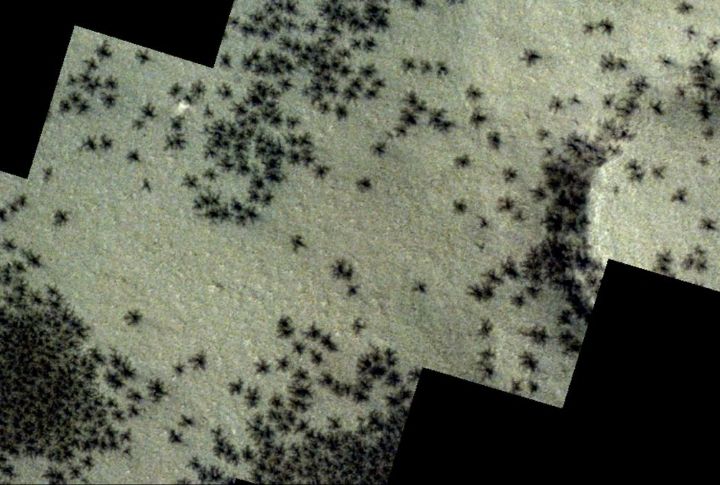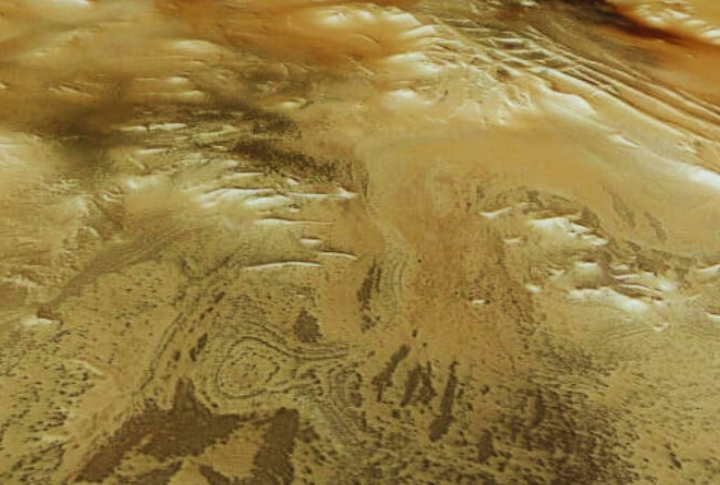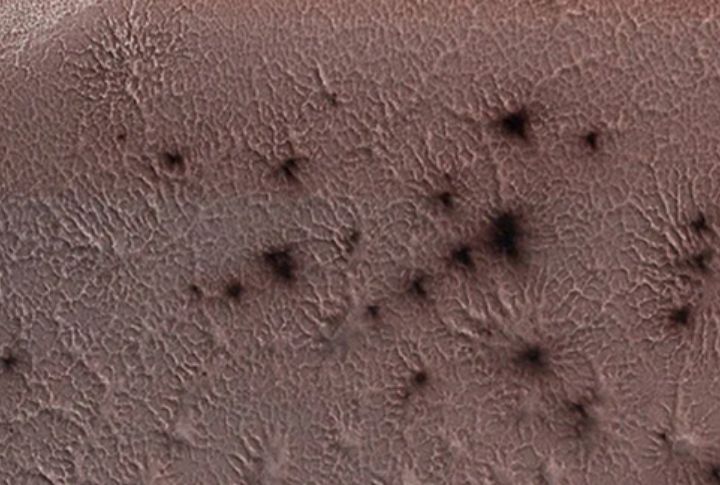
The images captured by ESA’s Mars Express Orbiter have left scientists and space enthusiasts baffled. Among the red planet’s fascinating geological features, peculiar spider-like patterns stand out, sparking curiosity and scientific debate. These intricate formations, unlike anything seen on Earth, hint at Mars’ unique and dynamic history. Let’s hunt these creatures down, alive or otherwise, and see what science has to say.
A Closer Look at Mars Express Orbiter

ESA’s Mars Express Orbiter, launched in 2003, has been pivotal in capturing high-resolution images of Mars’ surface. Its High-Resolution Stereo Camera (HRSC) has provided detailed views of various Martian features, including the mysterious spider-like patterns that intrigue scientists.
Discovering Spider-Like Patterns: A History

The spider-like formations on Mars are not a new phenomenon. The latest images from February 2024, along with previous observations from October 2020 by the ExoMars Trace Gas Orbiter, show these formations in greater detail, fueling ongoing scientific interest and debate.
Locking In on the Location: Inca City

Most spider-like patterns are found in the dark region near Inca City, officially known as Angustus Labyrinthus. This area, discovered by NASA’s Mariner 9 probe in 1972, features linear, geometric ridges reminiscent of ancient Inca ruins, giving the region its nickname.
The Science Behind the Spiders

These spider-like formations are created by sunlight, which causes carbon dioxide ice to turn into gas. The gas accumulates under the ice and eventually bursts through, dragging dark material to the surface and forming the distinctive patterns observed during the Martian spring.
Simulating Mars on Earth

Researchers at the Open University Mars Simulation Chamber recreated Martian conditions to understand the spider-like shapes. They used sediment grains and dry ice, observing how the sublimating ice carved out spider-leg cracks, supporting the theory that a similar process occurs on Mars.
Unanswered Questions and Continuing Research

Despite advances in our understanding, the spider-like patterns on Mars remain an enigma. Ongoing research aims to uncover more about these formations, keeping scientists and space enthusiasts engaged with each new discovery.
The Role of Mars’ Seasonal Changes

Mars’ seasonal changes play a significant role in the formation of spider-like patterns. During the Martian spring, sunlight warms the surface, causing sublimation of the carbon dioxide ice and leading to the dramatic gas eruptions that create these unique geological features.
Technological Advances in Martian Exploration

Technological advancements, such as the high-resolution imaging capabilities of the Mars Express Orbiter and ExoMars Trace Gas Orbiter, have been crucial in studying these spider-like patterns. These tools allow scientists to capture detailed images and conduct in-depth analyses of Martian surface features.
Comparing Martian and Terrestrial Geology

While spider-like patterns are unique to Mars, comparing them with terrestrial geological formations helps scientists understand the processes behind their creation. Studying similar features on Earth provides valuable insights into Martian geology and the planet’s environmental conditions.
The Future of Martian Exploration

Future missions to Mars will continue to explore and study these spider-like patterns. As technology advances and our understanding of Martian geology deepens, scientists hope to unravel the mysteries behind these fascinating formations and what they reveal about Mars’ history.


Comments
Loading…